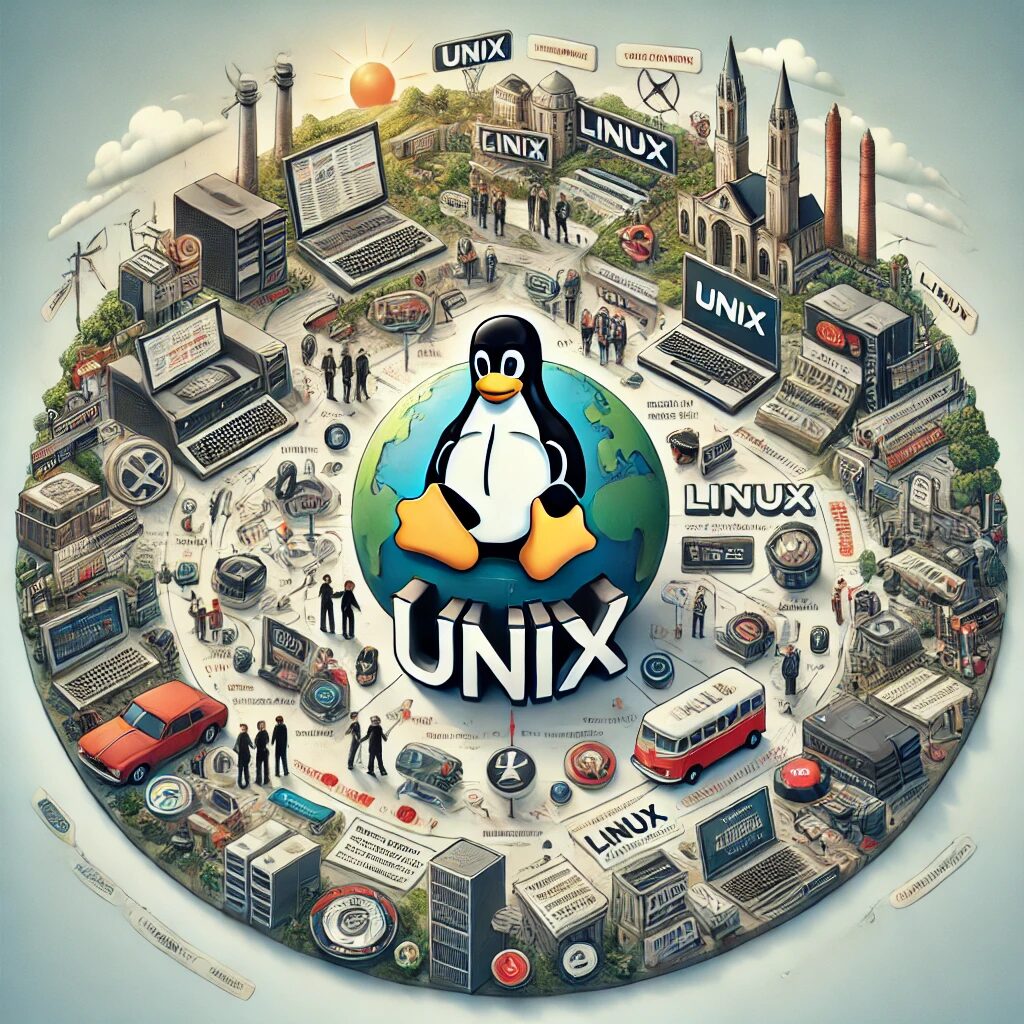Unix is a powerful, multiuser, multitasking operating system originally developed in the 1960s and 1970s at AT&T’s Bell Labs. It was created by Ken Thompson, Dennis Ritchie, and others, who sought to develop a simple and flexible system that could be easily adapted for different purposes. Unix’s portability, efficiency, and robust design quickly made it a popular choice for various computing environments.
Early Development
The development of Unix began in 1969 when Ken Thompson, Dennis Ritchie, and their colleagues started working on a new operating system for the PDP-7 minicomputer. They named their project “Unics” (Uniplexed Information and Computing Service), a pun on “Multics” (Multiplexed Information and Computing Service), an earlier, complex operating system. By 1971, the team had rewritten Unix in the C programming language, which significantly increased its portability and ease of use.
Adoption and Growth
In the 1970s, Unix began to spread beyond Bell Labs, particularly to academic institutions and research centers. The University of California, Berkeley, played a significant role in the dissemination of Unix by developing the Berkeley Software Distribution (BSD), which introduced many new features and improvements. Unix’s open and modular design allowed it to be adapted for a wide range of hardware and applications, leading to its widespread adoption in the computing world.
The Birth of Linux
In the early 1990s, a young Finnish student named Linus Torvalds began developing his own Unix-like operating system kernel, which he named Linux. Torvalds was inspired by the principles and design of Unix but aimed to create a free and open-source alternative that could run on inexpensive hardware. In 1991, Torvalds released the first version of the Linux kernel, inviting collaboration and contributions from programmers around the world.
Linux and the Open Source Movement
The release of the Linux kernel coincided with the rise of the open source movement, which advocated for free access to software source code and collaborative development. The Linux kernel, combined with the GNU operating system components (developed by Richard Stallman and the Free Software Foundation), formed a complete Unix-like operating system known as GNU/Linux. The open-source nature of Linux allowed it to rapidly evolve and improve through contributions from a global community of developers.
Unix vs. Linux
While Unix and Linux share many similarities, there are also significant differences between the two. Unix is a proprietary operating system with various commercial versions (such as AIX, HP-UX, and Solaris), whereas Linux is open-source and freely available. Linux has gained popularity for its flexibility, scalability, and security, making it a preferred choice for servers, supercomputers, and embedded systems. Additionally, Linux distributions (such as Ubuntu, Fedora, and Debian) provide user-friendly interfaces and extensive software repositories, making Linux accessible to a broader audience.
The Legacy of Unix and Linux
Unix’s influence on the computing world is profound, laying the foundation for modern operating systems and inspiring the development of many key technologies. Linux, as a Unix-like operating system, has continued this legacy, becoming a cornerstone of the open-source movement and powering a vast array of devices and services. Together, Unix and Linux have shaped the landscape of modern computing, demonstrating the enduring power of collaborative innovation and open standards.


